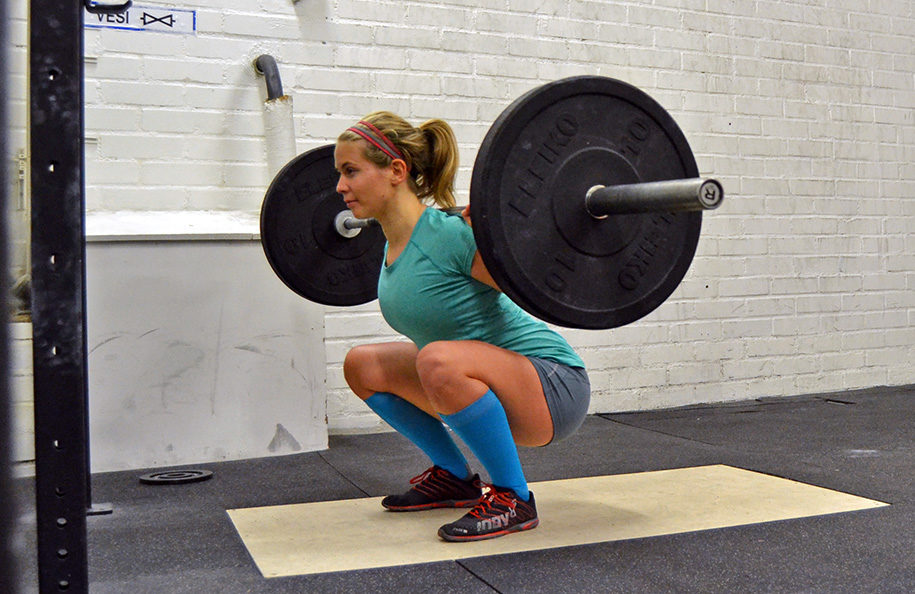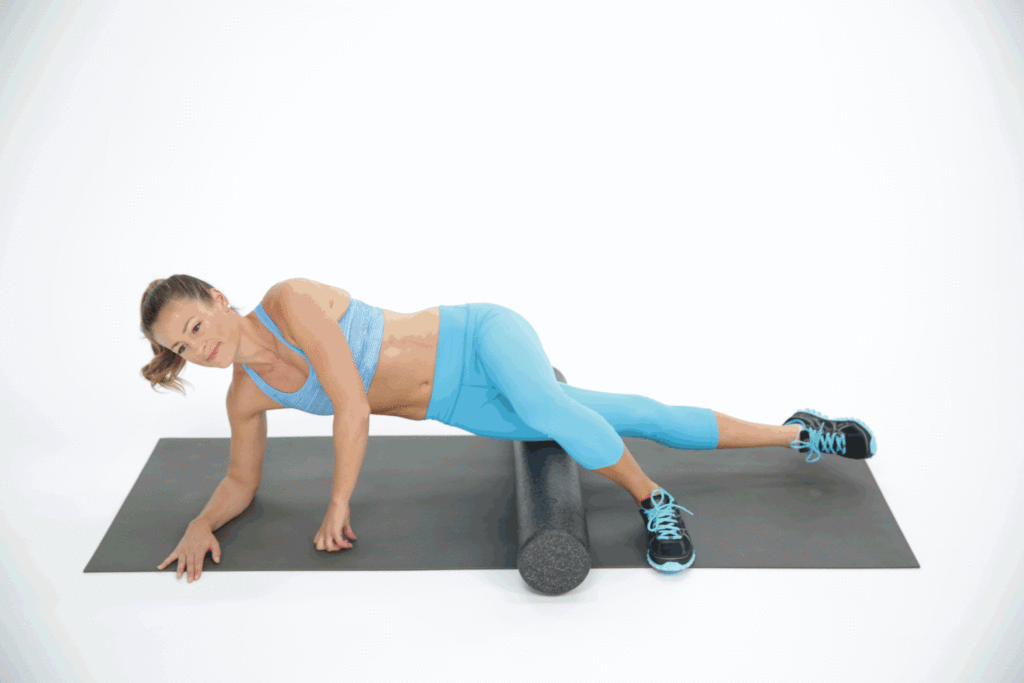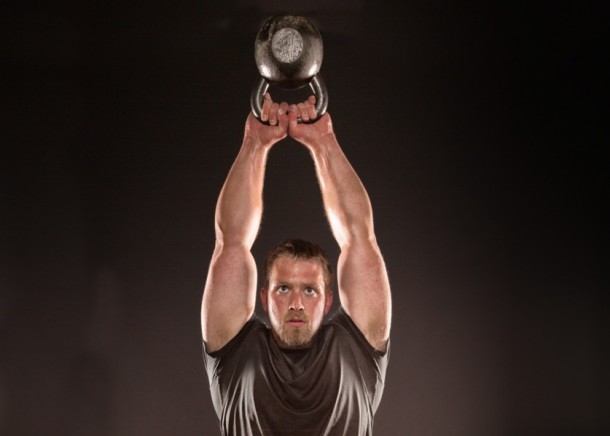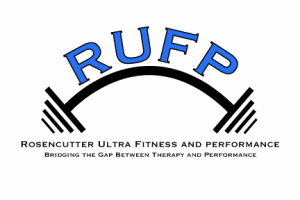Fitness and Performance Questions Answered

Dr. Adam Cosson sat down with Nick Rosencutter from Rosencutter Ultra Fitness & Performance and asked him some burning questions about weight lifting and strength training.
Q: How do you answer the “squats are bad for your knees” statement?
A: Squats with BAD FORM are bad for your knees. Squatting with proper technique is one of the best things you can do to strengthen all of the structures around your knees, prevent injury and enhance performance. Knowing how to hinge through your hips with a healthy blend of hip and knee motion (and proper alignment between the two), along with a stable trunk is essential to squatting appropriately. Since squatting is a fundamental human movement that we must perform daily, whether it be with daily activities of living or via sport, training healthy movement patterning and ensuring that we have good balance and function around the muscles of the hips, trunk and legs is essential to ensuring that we can be both strong and effective with the movement.
Whoever has said that “squats are bad for your knees” has clearly never learned how to squat correctly or researched the biomechanics and benefits of the exercise. Not only is the squat itself important, but training variations of this movement, and developing the ability to be strong and control knee and pelvic position while lowering our body has implications with everything from going down stairs to landing from a jump. If we don’t have the proper control, compensation and problems can and often do arise. Not squatting is definitely bad though 😊
Q: Thoughts on foam rolling?
A: Foam rolling is a great TOOL that is often put on overkill. Like many things in the fitness and therapy industries, when something becomes popular, it often gets butchered. Foam rolling can be beneficial in getting our nervous system to “let go” of excessive tension that it may be holding in specific muscle fibers, allowing us to move more efficiently and effectively, and often easing pain (we are not breaking up scar tissue, as is commonly said).

However, going overboard and “mashing” tissues can cause more harm than good. Also, blindly rolling things because the latest instagram expert said you should is usually not the greatest idea. If you have a certain muscle that is overactive because of a specific imbalance you have, rolling it may or may not be beneficial depending on WHY it is overactive. That being said, from an overall standpoint, it can be a great tool both for training prep and recovery when utilized correctly (and smartly).
Q: Biggest misconceptions of weightlifting or strength training?
A: An oldie but a goodie: “Lifting weights will make you “bulky” if you are a female.” This one is not as bad as it once was, as more females are strength training than ever before; however, there are still people out there that spread and believe this myth. Females have a significantly smaller muscle fiber size and much less testosterone than males, making it virtually impossible to get the so called bulky look, and even if these too physiological differences were not present, it would take A LOT of volume with training and a lot of calories with food intake to put on a significant amount of size.
Frequently, I train females who try harder than 99% of the females out there to put on size for powerlifting and figure comps and they are still nowhere close to “bulky.” Strength training will build muscle, which will help shed fat and give the “toned” look that most females are after. It is a must for physique goals, performance goals, movement goals, activities of daily living and overall health.
Another old myth that sometimes still finds light is the idea that strength training will somehow make you “stiff” or “slow.” The bottom line is that if you are strength training and lifting through a sufficient range of motion and utilizing a properly balanced program, you will build good mobility in the process. As an example, squatting with good technique is one of the best “mobility” drills that can be done for the hips, and you are doing it in an active manner while developing good motor patterns that will stick and carryover to other activities.
In contrast, simply performing passive stretches does not always guarantee good mobility during a real time activity since different muscles must stabilize while others move during actual exertional activity. The motor pattern is totally different. By strength training with real world movements, you develop good mobility along with proper stability and patterning all in one shot. As far as the idea of lifting making you slow: developing muscle and better neural drive are literally probably the two most important things that need to be done in order to produce more force, which is key to improving speed. Strength training and getting stronger will help to improve speed when the programming and lifting are performed correctly.
Q: Is going heavy good or bad for you?
A: It is essential to push your body with heavier and heavier weights in order to stimulate adaptation from both a muscle growth and nervous system efficiency standpoint, as well as a metabolic standpoint. If you do not challenge yourself with heavy enough weight, your body will adapt to the stimulus you are providing it and cease to make any more changes (i.e. doing countless reps with 5 pound dumbbells is pretty much useless after a certain amount of time). That being said, lifting heavier with bad technique is a bad idea and can easily lead to injury. Get coached up on proper technique and only then should you push heavier.

As far as going heavy when meaning lifting max level weights for 5 reps or less, it is good for certain adaptations someone may be after, such as improving neurological output/maximum strength and stimulating higher threshold muscle fibers. This is something that is highly beneficial for many athletes of all levels and varieties and those trying to be as strong as possible. Not everybody needs to lift max weights like a competitive lifter. It really comes down to the individual and their goals and situation. Regardless, proper technique and anatomical balance are very necessary prerequisites.
Q: Most underused exercise/piece of equipment?
A: Many people completely neglect exercises for their posterior chain (hamstrings, glutes, back); especially the hamstrings and glutes, in comparison to exercises for their anterior chain (quads, pecs, etc.) Glute bridges, pull throughs and multiple hip hinge variations, pulling at various angles for the upper and mid back are all often needed quite a bit when we see new clients. Balancing out the pull around the knee between the commonly dominant quad and undertrained hamstring is often needed, as is balancing out the pull between chest/anterior shoulder and the the multiple muscles in the upper and mid back. Glute ham raises and face pulls are two big money exercises that many people could use more of in their lives.
Training breathing mechanics are often completely overlooked. We see many people who are stuck in a state of inhalation, with their rib cage flared, causing the entire shoulder girdle to be out of proper position, which affects shoulder, hip and back function. Specific breathing drills can be used to influence rib position and improve shoulder, hip and back mechanics, along with influencing the nervous system among other things.
One more for lifters: reaching activities and promoting expansion in the upper and mid back are often unheard of. Between back squats, bench presses, deadlifts, rows, pullups and most compound movements that most serious lifters do, the upper back is constantly jammed into a compressed position with retracted scapulae, depressed/compressed posterior ribs and an extended spine, along with a nervous system that loves to be in sympathetic (fight or flight mode). This is all great when its time to perform but getting stuck like this can lead to issues with the shoulders and back as well as the ability to recover effectively.
While we don’t want to completely take away this compression on the back side since its beneficial to lifting performance, performing exercises that involve reaching with protraction of the scapulae and maintaining the ability to open up and expand the back of the rib cage with specific breathing drills can go a long way into providing enough balance here to keep the shoulders and back happy while also providing some downregulation of the nervous system, which can help boost recovery.
Q: What is the best ways to warm up before a workout? Cardio? Dynamic Stretching? Ease into your workout?
FIRST:
If there are any significant soft tissue restrictions, self massage/release via foam roller, la crosse ball or any applicable tools can go a long way in improving movement quality prior to training.
SECOND:
If someone has any significant rotations, shifts or tilts present in their pelvis or thorax, what we call reset drills work well in establishing an improved, neutral position so that better quality movement can occur. For example, if the pelvis is rotated right and the ribs are flared/tilted up excessively, any squatting, rotating, hinging, etc. will involve some kind of compensatory activity. Getting specific muscles to engage and dialing in breathing to influence positioning makes way for better movement and training.
THIRD:
Mobility drills/dynamic stretches for the hips, thorax and ankles can improve movement and warm tissues up prior to the main workout. These should be specific to the needs each individual.
FOURTH:
Warm up sets of the first main exercise should be performed to help grease the groove, warm structures up and prime the nervous system for the more intense sets to come.
Light full blood flow work such as sled dragging, riding a stationary bike, walking, etc. can be a beneficial add-on to warm and prime tissues and improve oxygen delivery prior to the main workout. This should be short, sweet and very low intensity if it is performed.
Q: How do you know what pain to push through in a workout and when to back off?
A: The discomfort and “burning sensation” that you feel while working your way through an exercise is a necessary occurrence to make your body adapt and get stronger. A sharp pain is a different story and if this kind of pain is felt, you should not push through it. Someone who is not used to training can sometimes confuse these two as they are not accustomed to any kind of discomfort so there can be a bit of a learning curve. As a general rule of thumb, if you have any kind of sharp pain that shows up even when not doing an exercise, you should probably back off and get it checked out.
Q: People often expect immediate results with strength training, how long do you typically see people need to stick with a workout routine to notice strength gains?
A: There is really no good answer for this, as everybody has different starting points, different stress levels, different home lives, different hormonal situations, etc. Its really about improving habits and making lifestyle changes that are sustainable in an ongoing fashion. That being said, you need to be consistent for at least a few months to get some real improvement. Not that you can’t make improvements sooner than that; if you are doing things correctly in a consistent manner, you’ll probably see some changes sooner, but we are after lasting results and changing lives.
Getting real results requires dedication and time. If you are looking at just general strength, people can see neural changes within a couple of weeks but if you want to make some real improvement, you need to be in it long term and think years, not weeks or months. I always find it funny when I see gyms with their “No Commitment” offers. No commitment basically guarantees no results. You can’t have success with anything without making a dedicated commitment.
Q: Why should someone workout at RUFP?
A: Everybody has specific needs based on their own personal situation. When it comes to training, if you are not assessed, not personally programmed for, not coached and are just doing random things, you are going to get random results, and in some cases, hurt or injured. There is a lot that goes into proper exercise prescription, and in a world with an unlimited number of internet “experts” with zero real qualifications, our entire team is educated both academically and in the trenches with the knowledge base to help each individual reach their desired goal. Anatomy, physiology, biomechanics, learning style, specific imbalances and weak points, and everything needed to ensure proper programming, coaching and training is taken into account with each individual.
We combine science and real world application to provide the best training experience possible. In addition to this, the family oriented atmosphere and camaraderie from every other member of the gym ensures a success minded training environment that helps add to accountability and success.
Q: Beside personal training what other services do you offer?
A: We also provide specialized manual therapy and nutrition coaching in order to tackle multiple aspects needed for success.
Q: What made you want to open your own gym?
A: I’ve loved everything about training and human performance since I was in high school and besides being hooked on bodybuilding and powerlifting early on, I became more and more fascinated with anatomy, physiology and movement of the body the more I studied and learned. After studying Exercise and Sports Science at UW-La Crosse, training people in various settings during my time there and interning at a great facility in Indianapolis, I started out on my own doing in home training and taking clients at a regular type of gym.
Gradually, I increased my client base and deep down I knew that I always wanted my own facility and what I wanted it to be like. I saved up equipment and worked on my business plan for a few years and eventually made the jump. I love being around the gym setting, I love helping people achieve their goals and having my own gym with the set up and equipment and culture that I want was a longtime dream of mine.
Q: Where can people find out more about you, your gym, and what you offer?
A: Check out our website and www.rosencutterultrafitness.com where you can find tons of blog content, published articles and resources, our services and much more. You can also find us on Facebook, Instagram (@rosencutterultra) and Youtube.
 262-373-9168
262-373-9168




